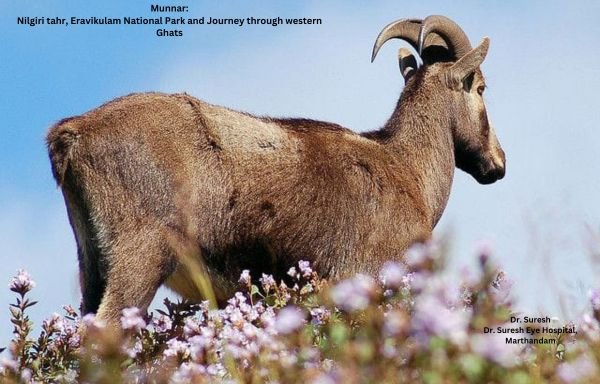The Nilgiri tahr (Nilgiritragus hylocrius) is an endangered wild goat native to the Western Ghats of India, particularly in the Nilgiri Hills. Adapted to high-altitude, rocky terrains, this herbivore faces threats from habitat loss, poaching, and human-wildlife conflict. Conservation efforts, including protected areas like Eravikulam National Park, have helped increase their population. This article explores their physical characteristics, habitat, threats, and ongoing conservation efforts to preserve this unique species and its environment.
Munnar:
Nilgiri tahr and Journey through Western Ghats
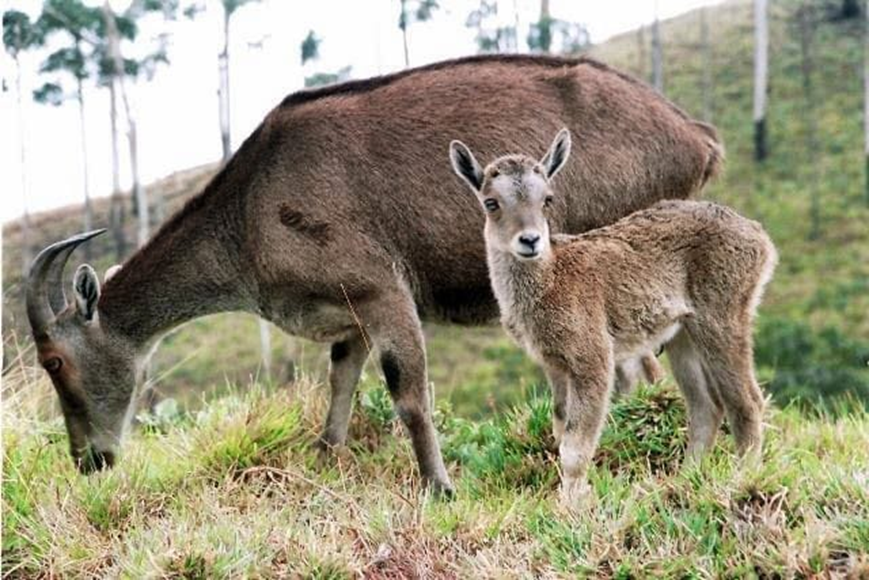
The Nilgiri Tahr (Nilgiritragus hylocrius) is a mountain goat native to the Western Ghats of India. It has a robust, muscular build, with short, dense fur and a reddish-brown coat. Primarily found in high-altitude grasslands, it is herbivorous, feeding on grasses and shrubs. The species is endangered due to habitat loss and hunting. Conservation efforts are underway, including protection in reserves like Eravikulam National Park.
The genus name Nilgiritragus is derived from Sanskrit and Greek: "Nilgiri" (meaning blue mountains in Sanskrit) and "tragos" (meaning goat in Greek). The name perfectly captures the habitat and the species itself, which is found in the blue-hued hills of the Western Ghats.
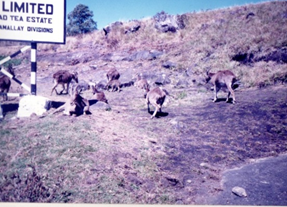
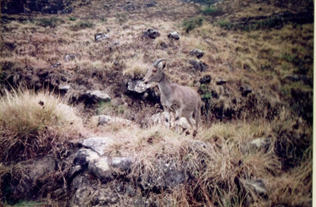
Physical Characteristics and Habitat
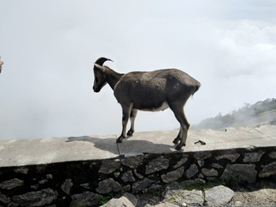
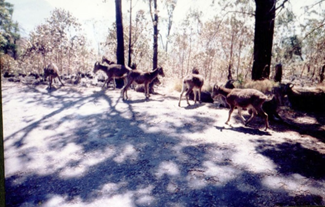
Nilgiri tahrs are well adapted to their high-altitude habitats ranging from 1,000 to 2,600 meters. They are typically found in rocky, steep terrain and grasslands, and their reddish-brown to grayish fur helps them blend seamlessly into the environment. This coloration serves as a protective camouflage, allowing them to hide from predators.
These goats are primarily herbivores, feeding on grasses, shrubs, and other small vegetation. They live in herds, with the social structure often organized around females and young males. Adult males, however, may live more solitary lives, coming together with the herd mainly during mating season.
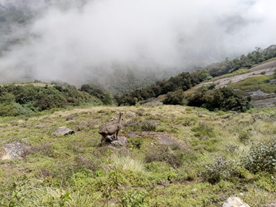
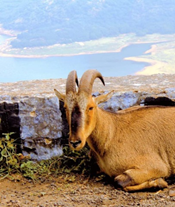
Evolution
The Nilgiri tahr belongs to the genus Nilgiritragus, which is distinct from other tahrs. Previously, they were grouped with the Himalayan tahr and Arabian tahr under the genus Hemitragus. However, a 2005 phylogenetic study revealed that Nilgiri tahr is more closely related to the genus Ovis, which includes sheep, rather than the genus Capra (which includes goats). This study led to the creation of the monotypic genus Nilgiritragus for the Nilgiri tahr. The genetic separation from other tahr species is estimated to have occurred 2.7 to 5.2 million years ago, with a notable divergence between the Nilgiris and Anamalai populations approximately 1.5 million years ago.
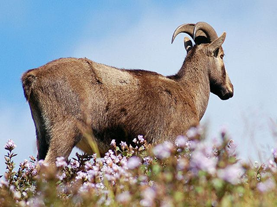
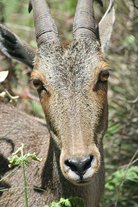
Threats
The Nilgiri tahr faces several significant threats:
1. Habitat Loss and Fragmentation: As human activity increases, their natural habitats are increasingly encroached upon, leading to fragmentation of the population and disruption of their ecosystems.
2. Invasive Species: Non-native plants and animals have disrupted the local ecosystem, competing with the tahr for resources and often altering their habitat.
3. Livestock Grazing: In many parts of the Nilgiris, livestock grazing competes with tahrs for food, and overgrazing degrades the land, making it less suitable for wild herbivores.
4. Poaching: Although it is illegal, poaching still poses a threat to their population, particularly in remote areas.
5. Human-Wildlife Conflict: As human settlements expand near the habitats of Nilgiri tahrs, conflicts between locals and wildlife can lead to negative outcomes for the tahr.
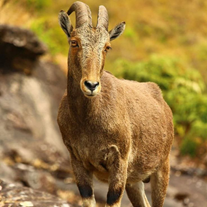
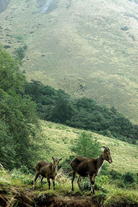
Conservation Efforts
The Nilgiri tahr is classified as Endangered by the International Union for Conservation of Nature (IUCN), and various conservation efforts have been implemented to protect this species. Notably, protected areas like the Eravikulam National Park in Kerala are crucial to maintaining the tahr's habitat. This park is home to the largest known population of Nilgiri tahrs.
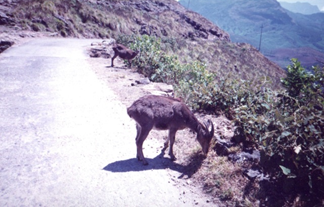
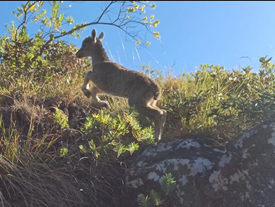
Population Recovery: By the end of the 20th century, only about 100 Nilgiri tahrs remained in the wild, but thanks to conservation efforts, their numbers have increased significantly. A WWF-India study now estimates the population at around 3,122 individuals. In 2014, a census conducted by the Kerala Forest Department recorded the highest ever count in Eravikulam National Park—894 Nilgiri tahrs, up from only 640 in 1996.
Range: The Nilgiri tahr's range extends over 400 km (250 miles), from the Nilgiri Hills in the north to almost the southern tip of India. Smaller populations are found in regions such as the Anamalai Hills, Periyar National Park, and the Palani Hills.
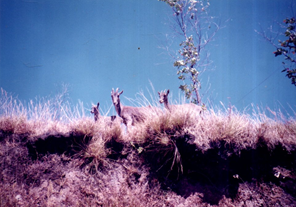
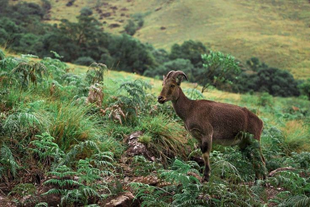
Nilgiri Tahrs in Kanyakumari
Nilgiri tahrs are found in small populations across the Kulasekaram and Kaliyal Ranges in Kanyakumari, located in the southernmost part of Tamil Nadu. These areas provide ideal habitats with steep, rocky terrain, though their numbers are smaller compared to other regions. The Kanyakumari district is home to around 200 individuals, and there is also a small herd in the Ponmudi Hills of Kerala, with fewer than 30 animals. These herds are crucial for the species' survival in the Western Ghats.
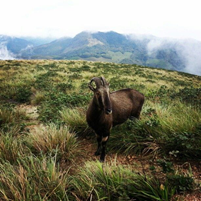
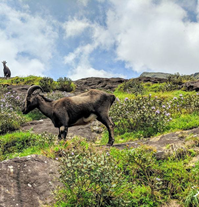
Recent Developments and Further Challenges
Despite the recovery of their population, Nilgiri tahrs still face challenges due to habitat fragmentation and human encroachment. The Boothapandi, Azhakiyapandipuram, and Kulasekaram ranges in Tamil Nadu house some of the smaller populations, making conservation efforts particularly important in these areas to ensure that these isolated groups don't lose genetic diversity.
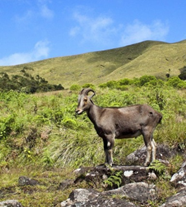
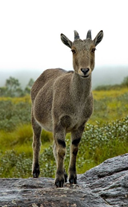
Conclusion
The Nilgiri tahr is a unique and endangered species of wild goat that has adapted to the harsh terrains of the Nilgiri Hills and Western Ghats. Conservation efforts have seen a steady increase in their population, but ongoing threats like habitat loss, poaching, and human-wildlife conflict continue to challenge their survival. Protected areas like Eravikulam National Park play a critical role in ensuring the species' future, but maintaining genetic diversity and addressing habitat fragmentation remain key areas for continued conservation work.

https://betterlivingdrsuresh.com/blog/munnar-to-the-peaks-a-decade-of-adventure
Click here for : Tamil eye related Blogs: https://tamilsuresh.com/
Click here for : English eye related Blogs :https://www.suresheyehospital.in/


